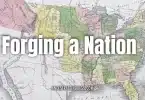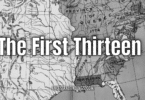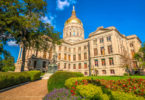Hartford is the capital of the state of Connecticut. It also used to serve as the county seat of Hartford County, until the county government was disbanded by the state in 1960 (it abolished all county governments in the state at that time). It has had many roles and nicknames through its history, and is currently referred to as the “Insurance Capital of the World.” This is because it is home to the national or world headquarters of many different insurance companies; in fact, insurance is today the major industry of Hartford. Hartford is currently the fourth largest city in Connecticut, trailing Bridgeport, New Haven, and Stamford.
The city was founded early on in the colonial period, in 1635. This makes it one of the oldest continually established cities in the United States. The oldest public art museum in the country is located there (the Wadsworth Atheneum). Hartford is also home to the oldest publicly funded park in the nation (Bushnell Park), and the oldest newspaper in the country (the Hartford Courant). It is home to the second-oldest high school in the nation (Hartford Public High School). The Mark Twain House is there, where Twain wrote his most famous novels, and where he raised his family. Twain is known to have loved Hartford, and once said of it:
“Of all the beautiful towns, it has been my fortune to see this is the chief.”
After the Civil War, Hartford enjoyed the status of being the wealthiest city in the country for several decades. The crème de la crème of society lived there and called it home. It was the location of one of the first assembly line factories and was the first “company town” in America. Hartford was a home of innovation and industry in those decades between 1865 and 1900. Today, however, Hartford’s fortunes have changed, and it is now one of the poorest cities in the United States. Three out of every ten families living there do so at below the poverty line. The Greater Hartford metro area, however, is still wealthy, ranking thirty-second of 318 US metro areas in economic production and eighth out of 28 in per capita income.
Before Europeans came to the area that is now Hartford, a varied selection of Algonquin Native American tribes lived there. The Podunks lived east of the Connecticut River, the Poquonocks lived both west and north of Hartford, the Tunxis were in West Hartford and Farmington, the Wangunks lived in the south of the city, the Massacoes were in the area that is now Simsbury, and the Saukiog lived in what is now the actual city of Hartford.
Europeans are first known to have visited the area that is now Hartford in 1614. This is when Dutch explorer Adriaen Block brought an expedition there. Nine years later, in 1623, the Dutch returned as fur traders from the New Amsterdam colony (now New York City). Their mission was to establish a permanent trading post in Hartford, and secure the area for the use of the Dutch West India Company.
The first outpost established by the fur traders was located in what is now the Sheldon/Charter Oak neighborhood in Hartford, on the south bank of the Park River. They called it Fort Hoop, which translates to “House of Hope.” Jacob Van Curler bought the land surrounding Fort Hoop in 1633, purchasing it from the chief of the Pequot tribe. This land became home to a handful of families and soldiers. There were more soldiers than families, and the land was abandoned by these first European settlers in 1654. However, the area is still called Dutch Point today, and Fort Hoop is commemorated in the name of a local street called Huyshope Avenue.
The abandonment of the Dutch settlement at Fort Hoop and the surrounding land is due to English immigration to the area. The Dutch largely ignored the influx of English settlers, until they realized there were far more of the English there than the Dutch. Peter Stuyvesant, a Dutch official in the area, met with representatives of the English settlers in 1650 in order to establish a boundary between Dutch and English lands in Hartford. The agreed-upon line was about fifty miles west of the settlement.
The English began coming to the Hartford area in the mid-1630s and settled near what is now downtown Hartford and the Sheldon/Charter Oak neighborhoods. The first English settlers were Puritans and came with two pastors, a governor, one hundred lay settlers, and 130 cattle. These first English settlers of Hartford came from neighboring Massachusetts Bay Colony, in the town of Newtown (which is now Cambridge), and named their new Connecticut settlement Newtown, as well. However, they changed it to Hartford in 1637 to honor the hometown of one of their pastors; that hometown was Hertford in England.
Because the new English settlement in Hartford was not within the jurisdiction of the Massachusetts Bay Colony by the terms of its charter, the Hartford settlers had to decide how to govern themselves when they arrived to set up their new home. Pastor Thomas Hooker gave a sermon on the subject, and it inspired others to write the Fundamental Orders of Connecticut. This document was ratified in January of 1639, and it gave the people of Hartford the right to govern themselves, rather than giving this authority to a higher power like a governor or a king. The Fundamental Orders of Connecticut inspired the writing of the later Connecticut Constitution, and also the US Constitution itself. In fact, one of modern-day Connecticut’s several nicknames is the “Constitution State.”
Because the original English settlement in Hartford included the Charter Oak (an actual ancient white oak tree, which the first colonists used to hide the Connecticut Royal Charter of 1662, in order to protect it from being confiscated by the English governor-general), Connecticut later adopted the oak tree as part of its state quarter. There is a Charter Oak monument at the corner of Charter Oak Place and Charter Oak Avenue.






